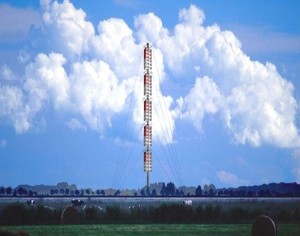Building a better windmill through design


Windmills have assumed the same basic form for centuries: long vertical axles crowned with rectangle-shaped blades. Now, a start-up is preparing to exceed 10 megawatts (MW) this summer by utilizing wind along the full length of a tower.
Nearly 12 years ago, inventor Kevin Friesth set out to build a better windmill. Friesth envisioned a honeycomb like design where a taller tower is adorned with modular, shrouded turbines along a vertical axis. The net effect is a lower cost per megawatt.
Friesth partnered with angel investors from Splitrock Capital, a private investment company based in South Dakota, nearly five years ago. A prototype was built in secrecy at Reese Air Force Base in Lubbock, Texas, following two years of computer-aided simulations, he said.
Splitrock Capital formed Splitrock Wind, and took the opportunity to stealthily obtain patents, and plot out its business model. It is in the process of formalizing its patents internationally, Friesth said.
The Splitrock design is intended to be fault tolerant – for offshore applications. The tower includes an elevator with a built-in crane so that it is self-serviceable by hand, Friesth explained. “If you lose one turbine out of 30, only one of 30 is down.”
The company has available Iowa State University's Ames campus wind tunnel to simulate harsh Atlantic coast weather conditions – complete with frost and snow. The Ames facility has previously partnered with NASA.
But Splitrock is first constructing an onshore version of its tower somewhere in Iowa this summer.
“We are projecting our costs of energy of our onshore turbine at 1.7 cents per kilowatt hour VS normal land based wind turbines at nearly 3.5 cents or more so our financial model shows we are lower than the price of coal or natural gas generation also,” Friesth wrote in a follow-up e-mail.
The design can scale up to 30 MW, according to Friesth. The company is talking to states on the U.S. coast about working together, he said.
“There will be a sighting issue to get the [offshore] prototype out there… We have the business model worked out. It’s not just a prototype – we’re working out the pricing details.”
The wait may not be too long. Last week, the Department of Interior announced a program to streamline the permit process for offshore wind farms.
This post was originally published on Smartplanet.com